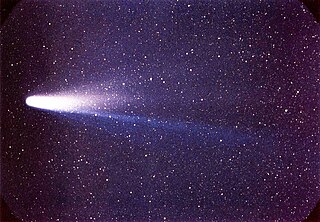
Halley's Comet, Comet Halley, or sometimes simply Halley, officially designated 1P/Halley, is the only known short-period comet that is consistently visible to the naked eye from Earth, appearing every 75–79 years. It last appeared in the inner parts of the Solar System in 1986 and will next appear in mid-2061.

Destination: Void is a science fiction novel by American author Frank Herbert, the first of four novels in the Pandora Sequence series. It first appeared in Galaxy Magazine—illustrated by John Giunta—in August 1965, under the title "Do I Wake or Dream?", but was published in book form as Destination: Void the following year. A revised edition, edited and updated by the author, was released in 1978. The book stands alone but the story is continued - and embellished with more details of the Moonbase project and the history of the clones - in Herbert's other novels The Jesus Incident, The Lazarus Effect and The Ascension Factor, co-authored by Bill Ransom.

2061: Odyssey Three is a science-fiction novel by the British writer Arthur C. Clarke, published in 1987. It is the third book in Clarke's Space Odyssey series. It returns to one of the lead characters of the previous novels, Heywood Floyd, and his adventures from the 2061 return of Halley's Comet to Jupiter's moon Europa.
The concept of self-replicating spacecraft, as envisioned by mathematician John von Neumann, has been described by futurists and has been discussed across a wide breadth of hard science fiction novels and stories. Self-replicating probes are sometimes referred to as von Neumann probes. Self-replicating spacecraft would in some ways either mimic or echo the features of living organisms or viruses.
The year 1982 in science and technology involved many significant events, listed below.

The Jesus Incident (1979) is the second science fiction novel set in the Destination: Void universe by the American author Frank Herbert and poet Bill Ransom. It is a sequel to Destination: Void (1965), and has two sequels: The Lazarus Effect (1983) and The Ascension Factor (1988).
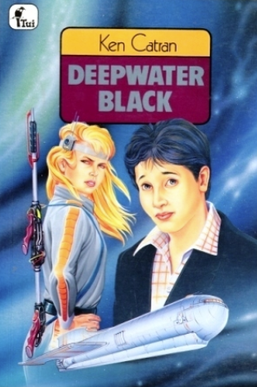
Deepwater Black is a 1992 novel, first in the Deepwater trilogy, by the New Zealand science fiction writer Ken Catran, with a cast of young characters who are supposedly stranded in space while a virus ravages Earth. The book series itself is quite different from the television series later developed. The approach of the novels focused on the characters as younger children, around 13-14, rather than the television approach, in which the characters were much older.

The Eyes of Heisenberg is a 1966 science fiction novel by American writer Frank Herbert.

Dr. Elizabeth Weir is a fictional character in the Canadian-American Sci-Fi Channel television series Stargate Atlantis, a military science fiction show about a military team exploring another galaxy via a network of alien transportation devices. Elizabeth Weir is introduced as a recurring character in the Stargate SG-1 season seven two-parter, Lost City. She does not hold any military rank since she is a civilian. Weir is the leader of the Atlantis expedition in Stargate Atlantis until the last episode of season three, titled "First Strike".
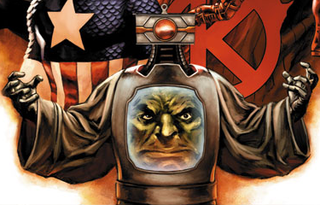
Arnim Zola is a supervillain appearing in American comic books by Marvel Comics. He is a master of biochemistry and a recurring enemy of Captain America and the Avengers. The character first appeared in Captain America and the Falcon #208, and was created by writer/artist Jack Kirby. When he was first introduced, Zola was a Nazi scientist experimenting with genetic engineering during World War II. His skills as a geneticist drew the attention of the Red Skull, who recruited him into Hydra to aid their efforts to create super soldiers. One of his experiments led to the brain of Adolf Hitler being copied into a being later known as Hate-Monger. Later in life, Zola transferred his own mind into a sophisticated robot body which protected it by storing it in its chest and displaying a digital image of Zola's face on its chest plate. This robot body allowed Zola to survive until modern times, as whenever it is destroyed, Zola could simply upload his consciousness into a new body.
Jon Lomberg is an American space artist and science journalist. He was Carl Sagan's principal artistic collaborator for more than twenty years on many projects from 1972 through 1996. In 1998, the International Astronomical Union officially named an asteroid in recognition of his achievements in science communication. He was NASA's Design Director for the Golden Record on the Voyager spacecraft; the cover he designed is expected to last at least a billion years.

In the Courts of the Crimson Kings is a 2008 alternate history science fiction novel by American writer S. M. Stirling.

Genome is a science fiction/detective novel by the popular Russian sci-fi writer Sergei Lukyanenko. The novel began a series also called Genome, consisting of Dances on the Snow and Cripples. The novel explores the problems of the widespread use of human genetic engineering, which alters not only human physiology but also psychology.
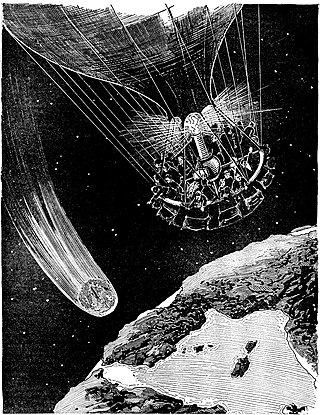
Comets have appeared in works of fiction since at least the 1830s. They primarily appear in science fiction as literal objects, but also make occasional symbolical appearances in other genres. In keeping with their traditional cultural associations as omens, they often threaten destruction to Earth. This commonly comes in the form of looming impact events, and occasionally through more novel means such as affecting Earth's atmosphere in different ways. In other stories, humans seek out and visit comets for purposes of research or resource extraction. Comets are inhabited by various forms of life ranging from microbes to vampires in different depictions, and are themselves living beings in some stories.
Digital immortality is the hypothetical concept of storing a person's personality in digital substrate, i.e., a computer, robot or cyberspace. The result might look like an avatar behaving, reacting, and thinking like a person on the basis of that person's digital archive. After the death of the individual, this avatar could remain static or continue to learn and self-improve autonomously.
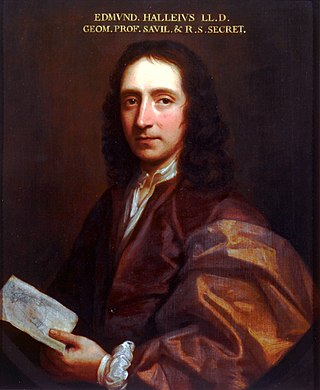
EdmondHalley was an English astronomer, mathematician and physicist. He was the second Astronomer Royal in Britain, succeeding John Flamsteed in 1720.
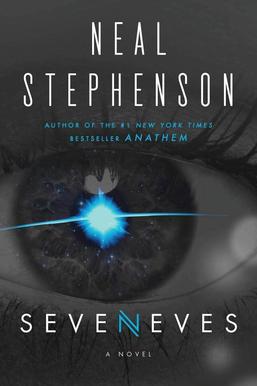
Seveneves is a science fiction novel by Neal Stephenson published in 2015. The story tells of the desperate efforts to preserve Homo sapiens in the wake of apocalyptic events on Earth after the unexplained disintegration of the Moon and the remaking of human society as a space-based civilization after a severe genetic bottleneck.

Aspects of genetics including mutation, hybridisation, cloning, genetic engineering, and eugenics have appeared in fiction since the 19th century.














